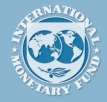Reuters reported that Jose Vinals, director of the IMF’s capital markets department, said last week that central banks may need to become market makers to counteract very low liquidity in fixed income markets. Wait a minute? Did he really say that? Isn’t that about the worst idea ever? No really, he said that. According to Reuters, “the only thing that can be done at that time is that central banks should become again market makers of last resort.”
We first wanted to understand if this was just a comment out of nowhere or if had some historical basis coming from Vinals. We found a couple of citations of the joys of over-regulation. As author of an IMF blog post on market liquidity from March 2015, Vinals said:
“Regulators should enact policies to encourage market participants to provide liquidity in normal trading conditions… regulators can design circuit-breakers that are triggered during these rare events, halting disorderly trading conditions and allowing time for liquidity to replenish.”
So, first you take constrictive regulation then you add more regulation to specifically relax it? This is tampering in the worst degree, and regulators are notoriously bad at inserting fine-tuned regulation to “fix” a problem caused by regulation. Regulation succeeds based on broad acceptance of principals. It fails, badly, when regulators try to micro-manage what they have wrought. The post also had an inkling of central bank intervention:
“Regulators and central banks ought to examine and exploit cross-border synergies in policies, including the preemptive creation of central bank swap lines that were so vital during the last crisis.”
Sure, these were vital and helpful, but why would they be necessary in 2015 if regulators hadn’t choked off liquidity to begin with? This is a contradiction in direction. You don’t fix financial markets that have been harmed by regulation with central bank intervention. You fix them by removing the stupid regulation to begin with.
Clearly, we are very distressed that someone as senior as Vinals would propose such a massively bad idea as to introduce central banks as market makers. Market making isn’t a market failure or an altruistic endeavor. That’s where governments come in. Market making is a for-profit activity that also happens to create a social benefit. The balance of market making is that profit-oriented companies provide liquidity with enough rules that liquidity stays around, and don’t flee on either a regular trading day (see: US Treasuries on October 15, 2014) or in a stressed period.
Thankfully, we aren’t the only ones to see things this way. Reuters also reported that Ashley Alder, chief executive officer of Hong Kong’s Securities and Futures Commission, was negative on Vinals comments: “If you react to [government intervention and low liquidity] by piling more intervention on intervention, you encourage more untoward risk taking and you end up with even greater amount of mispriced risk.” Yes, that’s about right.
Look, we get it: some regulators are highly interventionist by nature. But regulators, you have to understand, markets work best when they are left 85% to themselves with 15% rules to keep the crazies in check. We are now well into a 60% independent, 40% rules-constraining liquidity situation. Going for more regulation, or introducing central banks as actors in the price-setting, supply and demand equation, is absolutely not the way to go.
Here’s a link to the cringe-worthy Reuters article.


